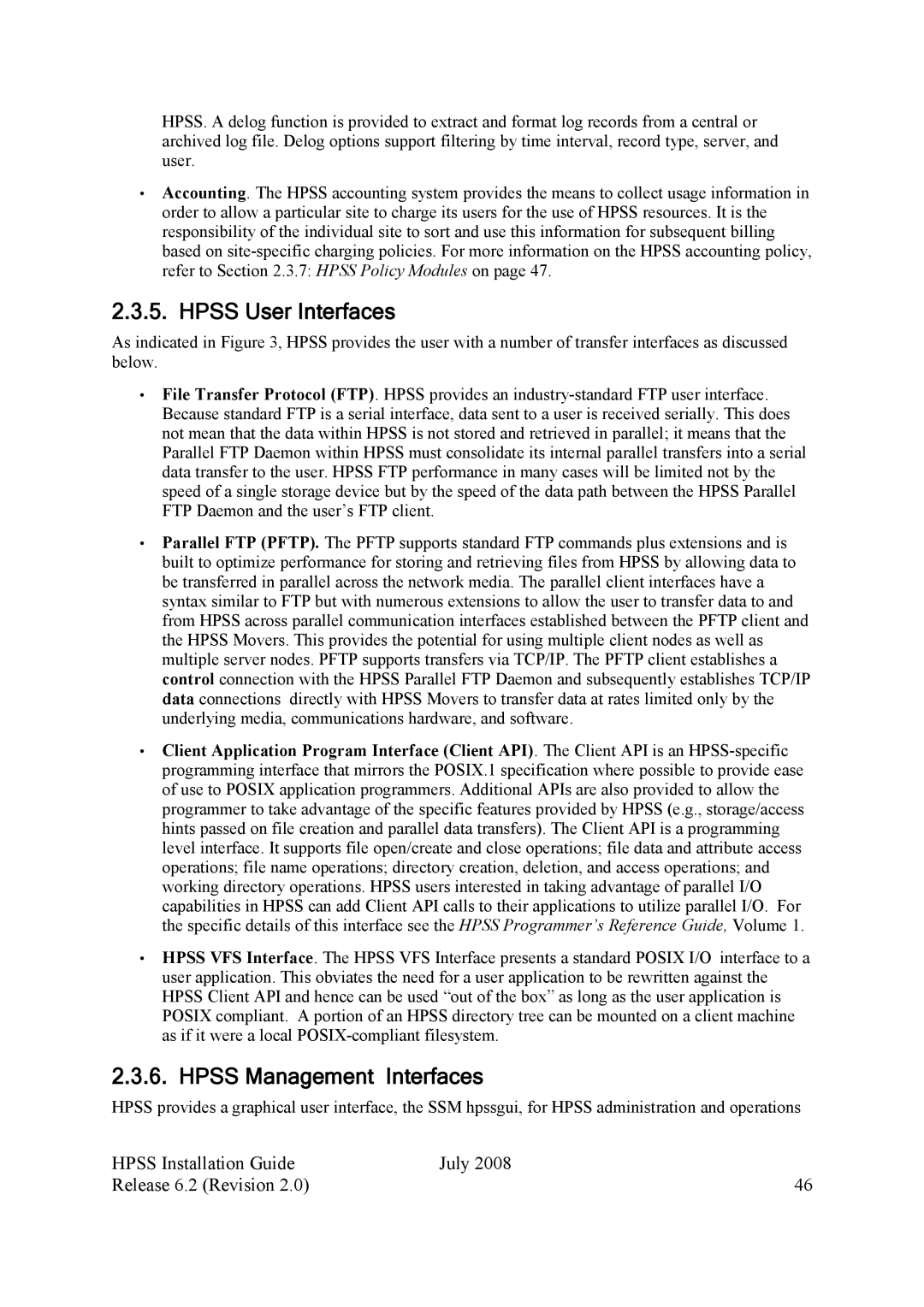HPSS. A delog function is provided to extract and format log records from a central or archived log file. Delog options support filtering by time interval, record type, server, and user.
•Accounting. The HPSS accounting system provides the means to collect usage information in order to allow a particular site to charge its users for the use of HPSS resources. It is the responsibility of the individual site to sort and use this information for subsequent billing based on
2.3.5. HPSS User Interfaces
As indicated in Figure 3, HPSS provides the user with a number of transfer interfaces as discussed below.
•File Transfer Protocol (FTP). HPSS provides an
•Parallel FTP (PFTP). The PFTP supports standard FTP commands plus extensions and is built to optimize performance for storing and retrieving files from HPSS by allowing data to be transferred in parallel across the network media. The parallel client interfaces have a syntax similar to FTP but with numerous extensions to allow the user to transfer data to and from HPSS across parallel communication interfaces established between the PFTP client and the HPSS Movers. This provides the potential for using multiple client nodes as well as multiple server nodes. PFTP supports transfers via TCP/IP. The PFTP client establishes a control connection with the HPSS Parallel FTP Daemon and subsequently establishes TCP/IP data connections directly with HPSS Movers to transfer data at rates limited only by the underlying media, communications hardware, and software.
•Client Application Program Interface (Client API). The Client API is an
•HPSS VFS Interface. The HPSS VFS Interface presents a standard POSIX I/O interface to a user application. This obviates the need for a user application to be rewritten against the HPSS Client API and hence can be used “out of the box” as long as the user application is POSIX compliant. A portion of an HPSS directory tree can be mounted on a client machine as if it were a local
2.3.6. HPSS Management Interfaces
HPSS provides a graphical user interface, the SSM hpssgui, for HPSS administration and operations
HPSS Installation Guide | July 2008 |
Release 6.2 (Revision 2.0) | 46 |
